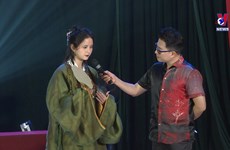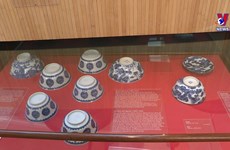Beauty of Vietnamese ao dai honoured
For centuries, the ao dai has been a part of Vietnamese life or shown on ancient bronze drums.
The ao dai has undergone many changes in modern times.
The primitive version of an ao dai is a Giao Linh dress (around 1744) - a four-piece dress worn with a long black skirt and a coloured fabric belt around the waist.
Later, the outfit was redesigned into a neater version, with dark colours.
Urban women in Vietnam then wore ao ngu than (a five-piece dress) in the 19th century, to distinguish themselves from the lower class.
In the early 20th century, the ao dai lemur was introduced, adding Western details such as puff sleeves and a heart-shaped neck. It was, however, considered indecent and against traditional values.
After the ao dai lemur faded into history, painter Lê Phổ again changed the ao dai, adding elegant lines that were more suitable for Vietnamese women and culture.
In the 1960s, the Dung tailor shop in then Saigon created the raglan ao dai. The long dress had sleeves connecting the neck to the armpits, with the front and back flaps connected by a row of buttons from the top down to the armpits and along one side.
The ao dai has continued to change with many styles and materials adopted.
In the minds of Vietnamese people and in the eyes of international friends, the traditional long dress is a symbol of the country’s people and culture.
The ao dai has indeed become a symbol of Vietnamese women. It can be worn to school or to work, when going go out and to parties, during Tet holidays and important socio-cultural events, and when visiting sacred places such as pagodas, temples, and churches.
And wearing an ao dai is always part of beauty contests.
The ao dai and the culture of the traditional outfit has been honoured at many major modern festivals.
Its beauty has been an endless source of inspiration for Vietnamese artists in songs and paintings.
The outfit is also a typical cultural product, and a “messenger” in promoting Vietnamese tourism.
In recent years, artists and stylists have given it a new beauty. The ao dai has been renovated, combining the quintessence of traditional culture and modern fashion.
Through its many modifications, the ao dai still expresses vitality. It has overcome many challenges to preserve its sound traditional values, honour women, and remain a symbol of Vietnamese culture, contributing to promoting the country’s image around the world./.













